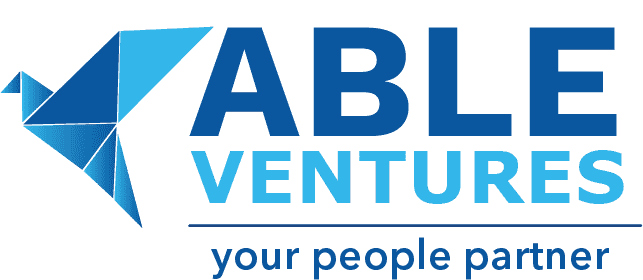Table of Contents
HR Management Systems in India: What Technology Gets Right (and What It Still Can’t Do)
- November 10, 2025
- Smita Dinesh
- 5:05 am
Technology has done something remarkable for HR — it has made the invisible visible.
Attendance, attrition, engagement, performance — everything is now measurable, traceable, and comparable.
But here’s the uncomfortable truth: data isn’t the same as understanding.
The real challenge for Indian organizations today isn’t adopting HR technology; it’s aligning it with the deeper human dynamics that software can’t automate.
The Promise of HRMS: Structure, Scale, and Speed
A decade ago, HR leaders managed people through Excel and intuition. Today, an HRMS can handle the entire employee lifecycle: from onboarding to payroll to performance analytics.
AI can flag attrition risks before a manager notices disengagement. Dashboards can show gender ratios, pay gaps, and absentee trends with a click. Compliance errors that once cost crores now get eliminated through standardization.
There’s no denying it — HR management systems have made HR smarter, faster, and more credible.
The real advantage lies in consistency. When your data is clean and processes automated, your people decisions finally become defensible.
The Blind Spot: Culture, Behavior, and Context
And yet, something’s missing.
Technology can tell you who’s leaving, but not why they stopped caring.
It can measure attendance, but not engagement.
It can store competency frameworks, but not interpret behavioral depth.
This is the paradox of modern HR — the metrics have improved, but meaning still requires a human lens.
That’s where systems need support from customized interventions — workshops, culture audits, and behavioral assessments that translate data into insight.
We often see companies implement world-class HRMS platforms but struggle to convert analytics into action.
That’s why our tools like the Assessment for Talent Management (ATM) and Competency Assessor Certification (CAC) exist — to help HR professionals interpret people data through behavioral intelligence, not just dashboards.
Where HRMS Ends — and Human Judgment Begins
No system, no matter how advanced, can replace three things:
- Leadership judgment: Algorithms can recommend, but only leaders can decide what trade-offs are worth making.
- Culture alignment: Technology can record behaviors, but it can’t rebuild trust or reshape values.
- Nuance: Employee motivation, team chemistry, and ethical dilemmas don’t fit neatly into drop-down menus.
The best organizations aren’t the ones with the most expensive software.
They’re the ones that know where automation stops — and intervention begins.
Designing the Hybrid HR Function
Think of technology as the infrastructure, and human capability as the intelligence layer sitting on top.
HRMS platforms should enable — not dictate — how people are understood and developed.
For example:
- Use analytics from your HRMS to identify low engagement clusters.
- Then, use behavioral diagnostics like Culture NXT or Leadership Scan to decode why engagement dipped.
- Finally, feed those insights back into the system — turning raw data into actionable strategy.
That’s when technology starts working for HR, not just through HR.
The Future of HR Technology Is Human
Automation will keep improving. AI will keep predicting.
But if HR leaders stop thinking and start merely approving, the function will lose its soul.
The future-ready HR function will use technology as a mirror — not a crutch.
It will ask better questions: What does this pattern mean? What’s driving it? What do we need to build beyond the dashboard?
Because while HRMS can streamline, it’s still human insight that transforms.
And the next generation of great workplaces will be built not by software — but by people who know how to use it wisely.
Final Thought
Technology organizes the data. Leadership gives it meaning.
The companies that learn to blend both will own the future of people management.
Smita Dinesh
Frequently Asked Questions
An HR Management System (HRMS) is a digital platform that automates and integrates core HR processes such as recruitment, payroll, attendance, performance, and compliance. It helps HR teams manage large workforces efficiently and make data-driven decisions.
HRMS platforms offer scalability, compliance accuracy, and data visibility. For Indian organizations, they reduce manual errors, streamline payroll, and support better workforce planning — especially important in industries with high employee turnover.
Technology can track engagement patterns but can’t replace human understanding. Engagement improves when HR combines system-generated insights with leadership communication, feedback sessions, and behavioral assessments.
HRMS tools can automate tasks and provide analytics but cannot interpret context, behavior, or motivation. They show what is happening — not why it’s happening. True insight still requires human observation and leadership judgment.
By integrating HRMS analytics with behavioral tools like leadership scans, culture audits, and assessments. This hybrid approach helps translate data patterns into meaningful actions for improving culture, performance, and retention.
No. AI will assist HR professionals, not replace them. While AI can identify trends and automate routine processes, decisions involving people, culture, and values still rely on human judgment and empathy.
Recent Blogs

Talent Retention Strategies: What Really Keeps Employees in 2025
A few months ago, I asked a young manager why she left a well-known tech firm after

How HR Analytics Is Transforming Workforce Decisions in India
Let’s be honest — HR used to run on intuition.
Gut feel. Manager instincts. Anecdotal evidence

Employee Wellness Programs: The Foundation of Culture Transformation
Walk into a great workplace, and you can feel it — the energy, the calm, the quiet
